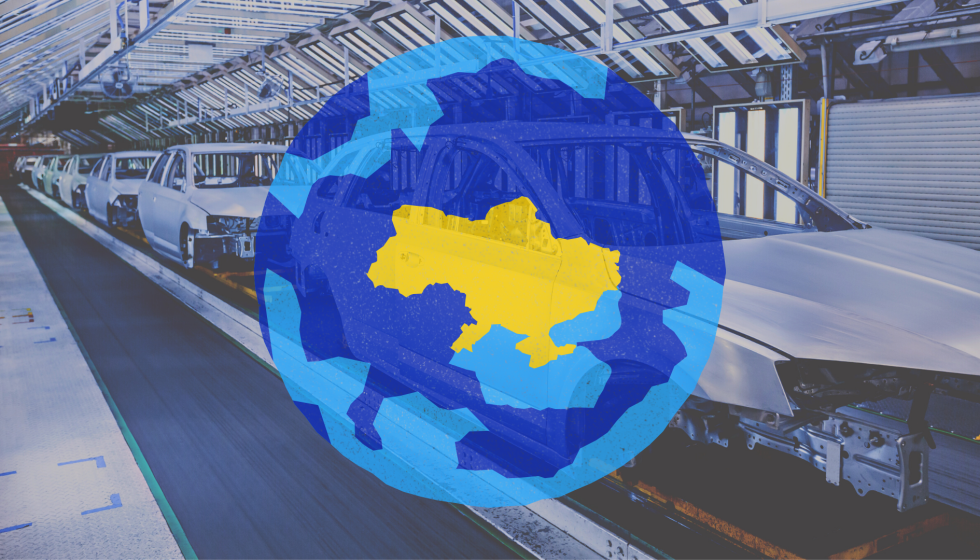More than 1,200 Polish companies have declared their readiness to rebuild Ukraine after the war. It is not only about construction in the literal sense, but also about the recovery of the economy and the creation of new jobs in various fields. Including in the automotive industry. This is both the production of spare parts and components for cars, and the actual automobile industry. Could this be Ukraineʼs chance to restore the automobile industry?
What is the state of the automobile industry in Ukraine today?
As of today, there is no full-cycle automobile manufacturing in Ukraine. All light vehicles coming from Ukrainian enterprises and receiving the "made in Ukraine" marking are large-unit assembly using the so-called SKD method, or conversion of imported cars or chassis for special needs.
Of the large factories, only one is operating today — Transcarpathian "Evrokar", which mainly manufactures Skoda brand cars. Even before the start of the full-scale war, production volumes were not large, several thousand cars per year. After the invasion, the plant was shut down for several months and is now trying to resume production.
Another large factory, "ZAZ" in Zaporizhzhia, has been engaged in the large-unit assembly of cars from machine kits manufactured in Russia for the past few years. It is obvious that such a business model no longer has a future, and, taking into account the proximity to the front line (and the presence and temporarily occupied territories of a number of important partner enterprises), the restoration of the plantʼs work is currently under great question.
The only segment of the automotive industry in Ukraine that can be called something more than just SKD assembly is the production of buses. Although the chassis and main components are supplied by factories in other countries, the body is manufactured and assembled in Ukraine. At least that was the case before the war.
At the same time, it is worth noting that most of the products were sold on the domestic market of Ukraine. Thus, in 2021, only 672 vehicles manufactured or converted by Ukrainian enterprises were exported. In general, a significant part of "Ukrainian" cars were bought by organizations — private and state.
Regarding the production of spare parts and components, the situation here is radically different. Before the beginning of the Great War, Ukrainian enterprises were one of the largest suppliers of wiring harnesses, neon and steel to the European Union. With the beginning of a full-scale invasion, some factories were stopped, some were destroyed. Some foreign enterprises decided to relocate production to other countries.
What, besides the war, prevents the development of the automobile industry?
The majority of Ukrainian car factories (or their remnants) are production organized on the basis of Soviet industrial facilities, which were built in the days of a planned economy, not a market economy. Such manufacturers, who are not used to competition, considered closing the market from the import of cars from abroad as a means for development, instead of investing in modernization of production, improvement of quality and access to European markets.
But even years of depriving Ukrainians of choice did not help preserve the business model, which could not survive in market conditions. Together with the gradual European integration, the ratification of international trade agreements and the gradual lifting of restrictions on the import of cars from abroad, the so-called "domestic" manufacturers were sharply losing their positions on the market.
In general, two of the biggest problems of the modern Ukrainian automobile industry can be identified: the lack of a competitive product and sales markets. In simple words: there is no high-quality car at a good price that would be produced in sufficient volumes for export abroad. And it is necessary to start, first of all, by changing the philosophy of this business.
Are EU investments a chance for Ukraine?
A good example of post-socialist countries that also had a non-competitive and unprofitable "national" car manufacturer are Poland and Slovakia. At one time, there was a "green light" for investments from the countries of Western Europe. Global car brands opened their factories, created jobs and brought investments.
But here you need to understand two important points. First: most of the manufactured cars are exported — they are sold in other countries. They do not restrict imports in order to sell these machines in the domestic market, but develop international trade.
Second: Ukraine may be attractive due to its geographical location, relatively inexpensive labor force, and generally lower costs for the production process. However, this is not enough: investment in Ukraine requires conditions — the so-called investment climate. And these are not only reduced or zero taxes, but first of all guarantees of compliance with laws and equality of all before their implementation. And the absence of massive corruption, of course.
In this way, Ukraine will become attractive for the construction of new or reconstruction of existing automobile factories, on the other hand, a huge sales market will appear for these enterprises. After all, the EU is primarily an economic union, and it is the free movement of goods and services within its borders that can give Ukraine a chance to restore the economy. Including in the automotive industry.
Are there any chances in Ukraine to resume production of full-cycle cars? Yes, but only after the integration of Ukraine into the single economic space of the European Union. Is it possible to build car factories at once? Most likely, no. But the launch of several more factories for the production of individual parts and components is a very real prospect of a few years after the most important condition is met — the victory of Ukraine in the war with Russia.



